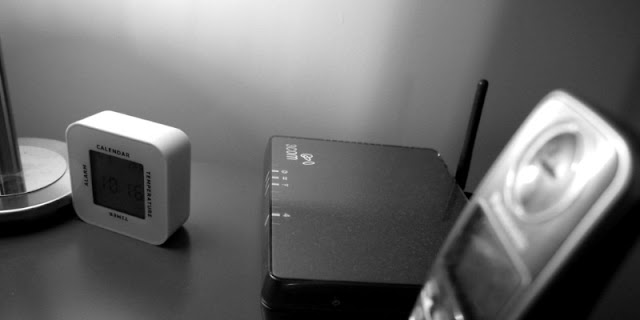Pretty much everyone with an Internet connection at home of a workable speed uses Wifi for every device that can use it. In the UK, the ISP market is carved up between TV and Telephone companies. What few small proper ISPs that remain in business are fulfilling niches. And the more the big companies dominate the less real choice consumers have. Moreover, as broadband usage saturates in the cities, this translates to Wifi congestion.
And the band played on
The current most prescient problems with Wifi, out there in the real world, were written right into the early standards for the 802.11 protocols, particularly the ones that use the busy 2.4GHz frequency range.
Because of the size of the 2.4GHz band and the way it is carved up, there are only three channels (in the UK) that can be used in proximity that don't overlap. These are 1, 6, and 11. Use any other channels (which will overlap) and you will cause interference. Use the same channel as someone else and you'll cause each other interference.
As a result of this, the big companies think it is neat for marketing if they can say that the broadband box they provide you with can automatically adjust itself to use a better channel. I've seen them jump channel every few seconds in heavily contended areas. Because everyone else's box also has this 'feature', they all jump channel every few seconds too. This creates more work for the devices trying to connect.
Double trouble
The ISPs and the manufacturers of broadband boxes make all sorts of claims about Wifi speed and sometimes this is achieved by what's known as channel bonding. Instead of using just one channel, you effectively use up two, compounding the issue with channel congestion. Having channel bonding turned on by default (which a few vendors do) shows a disregard for the typical environment these boxes work in.
Give me 5
The 2.4GHz band is not the only one used for Wifi. The 5GHz band ostensibly has many more non-overlappping channels (at least 23 in most countries). In practice this tends not to be the case. In the UK, as a result of radar interoperability, many of the wireless routers available to consumers support only four channels (36, 40, 44, 48). This seems to be chiefly due to cost cutting on the part of the vendors as they would otherwise have to implement something called DFS. There doesn't appear to be any way to find out for sure what channels your box will support before you buy one.
When is it N?
One of the things I really dislike is the way in which 802.11n is marketed. Every laptop or tablet on the market is mooted as being "wireless N" compatible, despite the vast majority being 2.4GHz only. The 802.11n standard includes the 2.4GHz and 5GHz ranges. Consumers would have to know to look for the term "dual band" in order to actually buy something with a 5GHz radio. As for those who want to use 2.4GHz and 5GHz at the same time on their box, they have to know to look out for simultaneous dual band in the wireless router descriptions.
So in summary, its all a bit of a mess.


Comments